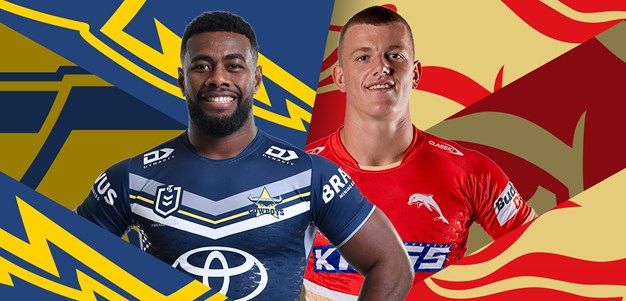
Wheelchair rugby league is an exciting sport full of big hits and athletic plays, and this month its World Cup features alongside the men's and women's tournaments for the very first time.
While many of the rules align with running rugby league, including the game consisting of two 40-minute halves and the ball having to be passed backwards, there are some different variations to keep an eye on.
NRL.com looks over some of the key rules for Wheelchair rugby league.
How are the teams made up?
Five players are on the court at any given time, with a further five players serving as substitutes. Teams can be mixed gender and there are no restrictions on age.
A common misconception is that wheelchair rugby league athletes have to have a physical disability, but that isn't the case, with up to two able-bodied players allowed on the court at any given time.
Scoring
Just like running rugby league, the aim is simple - ground the ball in the opposition in-goal area to score a try. Conversions, like all traditional kicking motions in wheelchair rugby league, are completed with a player's fist in a punching motion with drop goals "kicked" in the same way. Drop goals are 'kicked' in the same way.
Scoring plays are worth the same as they are in running rugby league, with four points for a try, two for a conversion and one for a drop goal.
Match Highlights: Wheelchair State of Origin, 2022
Tackling
All players wear tags on their shoulders during a game; when at least one of them is removed from the player in possession by an opponent, that counts as one tackle.
Contact can be made with the chair of a ball-carrier, often resulting in big hits, and if a player can't progress or get the ball free, it counts as a tackle by default.
A play-the-ball is completed by touching the ball on the floor and passing to a teammate. Possession lasts for six tackles before the ball is handed over.
Foul play
The most common plays which will draw a penalty include high contact in a tackle, interfering with an opponent's wheelchair or clothing and obstruction, particularly after an opponent has "kicked" the ball.
Players can be sin-binned or dismissed for serious or repeated offences, with a sin bin seeing a player serve a 10-minute suspension before returning to the field.
A dismissal sees a 10-minute suspension served, and the offending player ruled out of the remainder of the game, but the with a different player able to return to the court in their place in order to maintain the integrity of the match.




